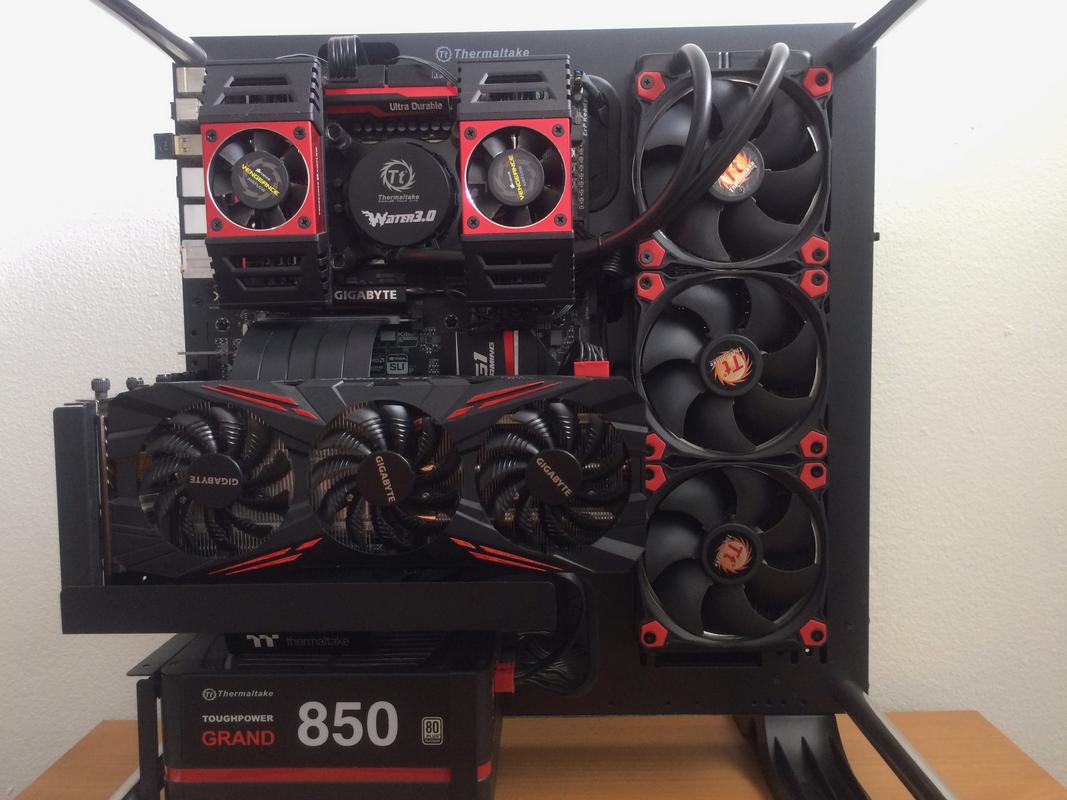haha you told me 214 so I only read that one, if I would it just scroll up just a little bit more then I would it see your name and your previous post
yes you did you mentioned the drives
about the barefoot test they did use AHCI drives for the benchmarks but they did talk about NVME
I know the card is a bit pricey but I believe is worth the money
the only thing I don't like is the green PCB but I will try my best to try to hide the squid carrier card behind my Nvidia 1080
yes I know about the chip and the function but is good we talk about all this for the ones that don't know about it
I wanted to thank you because you help me to complete the puzzle
thanks to you I found the last missing part of the puzzle
most likely I will received the card on Monday because it was shipped today
if I have time I will upload some benchmarks
yes there are many cards out there
ASUS HYPER QUAD M.2
that one is very cheap but I think is locked to ASUS board and the whole thing with buying a separate key, but that one uses bifurcation, so it needs a compatible motherboard
HP Z TURBO QUAD PRO
that one is even more expensive than the squid, I will say probable the best looking all them all
but I don't know if the sell the card alone, but for that price I think it bring some drives inside
DELL ULTRA SPEED DRIVE QUAD
this one is bios lock to dell boards only, brown PCB
HIGH POINT SSD7100 SERIES
this one they sell it with drives and with out drives , also very nice looking unfortunately no Mac support
the dell and the hp are only capable of 9 gbps , supposedly that is the highest they can go
the ASUS and the high point can go very high up to 12,000 and beyond depending on the drives and the CPU
there is also another quad card out there but I don't remember the name right now and I lost the page
the main problem is that many of those card has not been tested on Mac OS or a hackintosh
many are simply windows only and some of them are not even bootable
most of them simply will not work on Mac OS for one reason or another
that's why I settle for the squid card even having that ugly green pcb that I don't like
but at least the card is good and worth the money and is bootable on Mac OS
be back Monday with some test results

yes you did you mentioned the drives
about the barefoot test they did use AHCI drives for the benchmarks but they did talk about NVME
I know the card is a bit pricey but I believe is worth the money
the only thing I don't like is the green PCB but I will try my best to try to hide the squid carrier card behind my Nvidia 1080
yes I know about the chip and the function but is good we talk about all this for the ones that don't know about it
I wanted to thank you because you help me to complete the puzzle
thanks to you I found the last missing part of the puzzle
most likely I will received the card on Monday because it was shipped today
if I have time I will upload some benchmarks
yes there are many cards out there
ASUS HYPER QUAD M.2
that one is very cheap but I think is locked to ASUS board and the whole thing with buying a separate key, but that one uses bifurcation, so it needs a compatible motherboard
HP Z TURBO QUAD PRO
that one is even more expensive than the squid, I will say probable the best looking all them all
but I don't know if the sell the card alone, but for that price I think it bring some drives inside
DELL ULTRA SPEED DRIVE QUAD
this one is bios lock to dell boards only, brown PCB
HIGH POINT SSD7100 SERIES
this one they sell it with drives and with out drives , also very nice looking unfortunately no Mac support
the dell and the hp are only capable of 9 gbps , supposedly that is the highest they can go
the ASUS and the high point can go very high up to 12,000 and beyond depending on the drives and the CPU
there is also another quad card out there but I don't remember the name right now and I lost the page
the main problem is that many of those card has not been tested on Mac OS or a hackintosh
many are simply windows only and some of them are not even bootable
most of them simply will not work on Mac OS for one reason or another
that's why I settle for the squid card even having that ugly green pcb that I don't like
but at least the card is good and worth the money and is bootable on Mac OS
be back Monday with some test results

Last edited:



